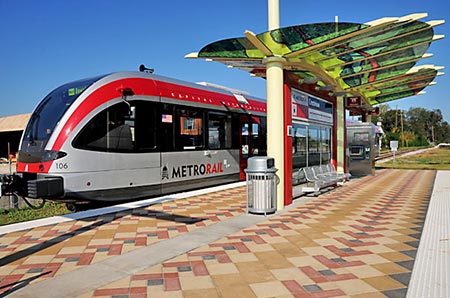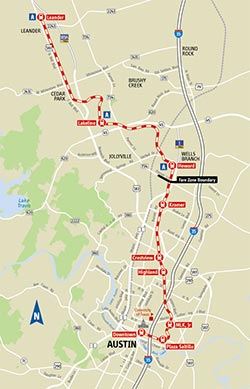Commuting Passenger rail: Austin
by Patrick
Comments Off on Austin back in the passenger rail game
Austin back in the passenger rail game
After a 70-year hiatus, much debate and then a yearlong delay, Austin will soon join American cities that have added passenger rail back into the commuting mix.
On March 22, Capital Metro will start running diesel trains on a 32-mile route with nine stops from Leander to downtown Austin, the agency recently announced. A one-way trip will last a little more than an hour and the regular fare will be $3.
Trains will come by every 35 minutes during peak travel times, the Austin American-Statesman reported. Nearly 200 people can fit in a car, including standing room.
To match the capacity of a highway lane, you’d have to hook up three cars at a time and run them every 15 minutes.
Metro shelled out $105 million for its rail system, a figure that doesn’t include some direct costs, the Statesman said. Still, at about $3.3 million a mile, using an old rail line, the city struck a bargain as far as rail projects go.
Consider that:
- Phoenix paid $70 million a mile when it joined the league of rail cities a year ago, leaving San Antonio as one of the largest U.S. metros without rail service.
- Houston and Dallas spent $45 million a mile to build light rail, says a now dated 2005 San Antonio report.
- San Antonio is spending some $12 million a mile to spruce up a bus route into rail-like service from downtown to the Medical Center, which will start in 2012.
And, to throw an apple in the cart, a San Antonio toll authority last year was eying a $472 million price tag to design, buy land and reconstruct just under eight miles of U.S. 281 to add six toll express lanes. That’s $60 million a mile; $20 million per two-way lane mile.
Sources:

